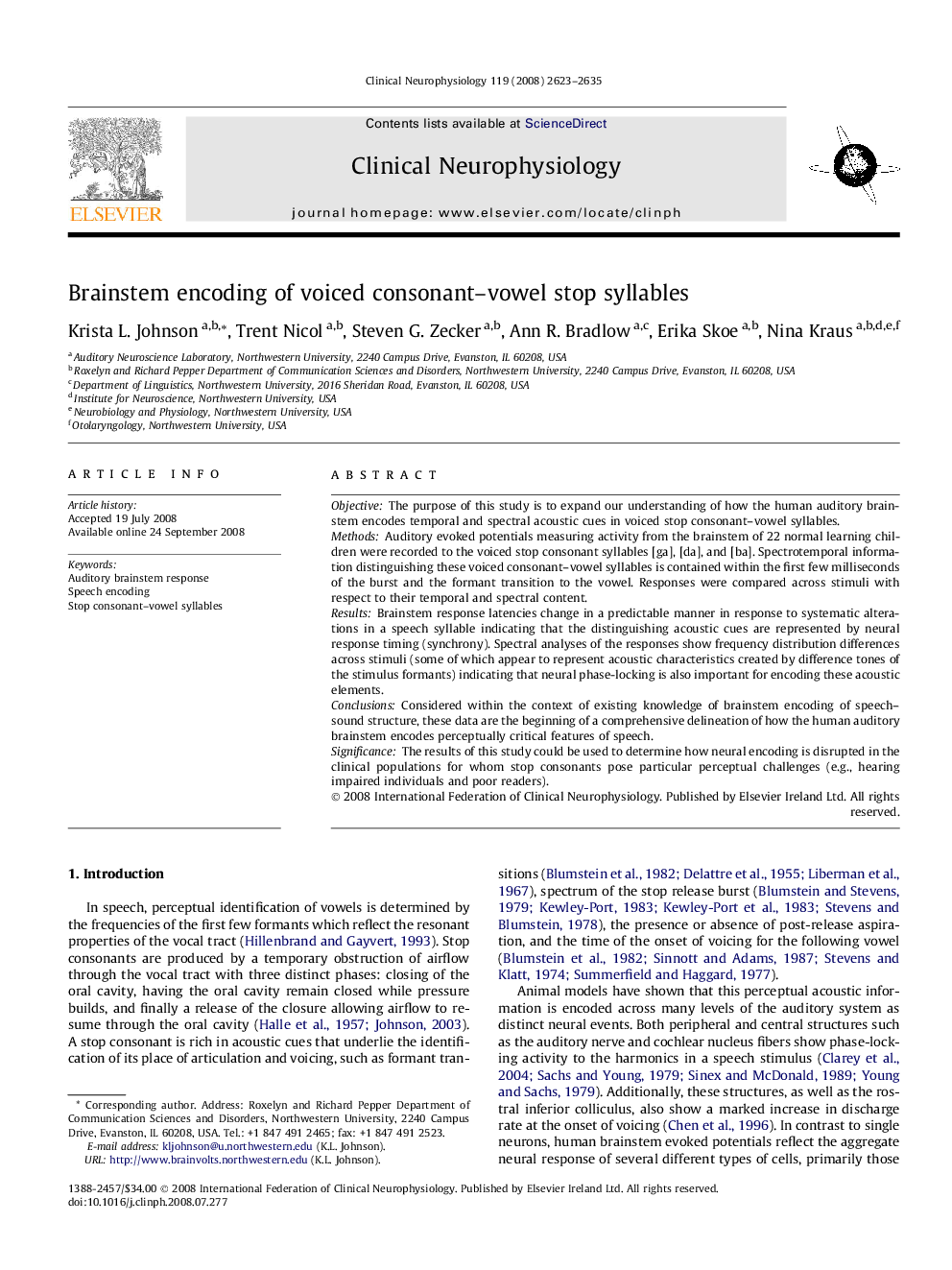| Article ID | Journal | Published Year | Pages | File Type |
|---|---|---|---|---|
| 3047024 | Clinical Neurophysiology | 2008 | 13 Pages |
ObjectiveThe purpose of this study is to expand our understanding of how the human auditory brainstem encodes temporal and spectral acoustic cues in voiced stop consonant–vowel syllables.MethodsAuditory evoked potentials measuring activity from the brainstem of 22 normal learning children were recorded to the voiced stop consonant syllables [ga], [da], and [ba]. Spectrotemporal information distinguishing these voiced consonant–vowel syllables is contained within the first few milliseconds of the burst and the formant transition to the vowel. Responses were compared across stimuli with respect to their temporal and spectral content.ResultsBrainstem response latencies change in a predictable manner in response to systematic alterations in a speech syllable indicating that the distinguishing acoustic cues are represented by neural response timing (synchrony). Spectral analyses of the responses show frequency distribution differences across stimuli (some of which appear to represent acoustic characteristics created by difference tones of the stimulus formants) indicating that neural phase-locking is also important for encoding these acoustic elements.ConclusionsConsidered within the context of existing knowledge of brainstem encoding of speech–sound structure, these data are the beginning of a comprehensive delineation of how the human auditory brainstem encodes perceptually critical features of speech.SignificanceThe results of this study could be used to determine how neural encoding is disrupted in the clinical populations for whom stop consonants pose particular perceptual challenges (e.g., hearing impaired individuals and poor readers).
